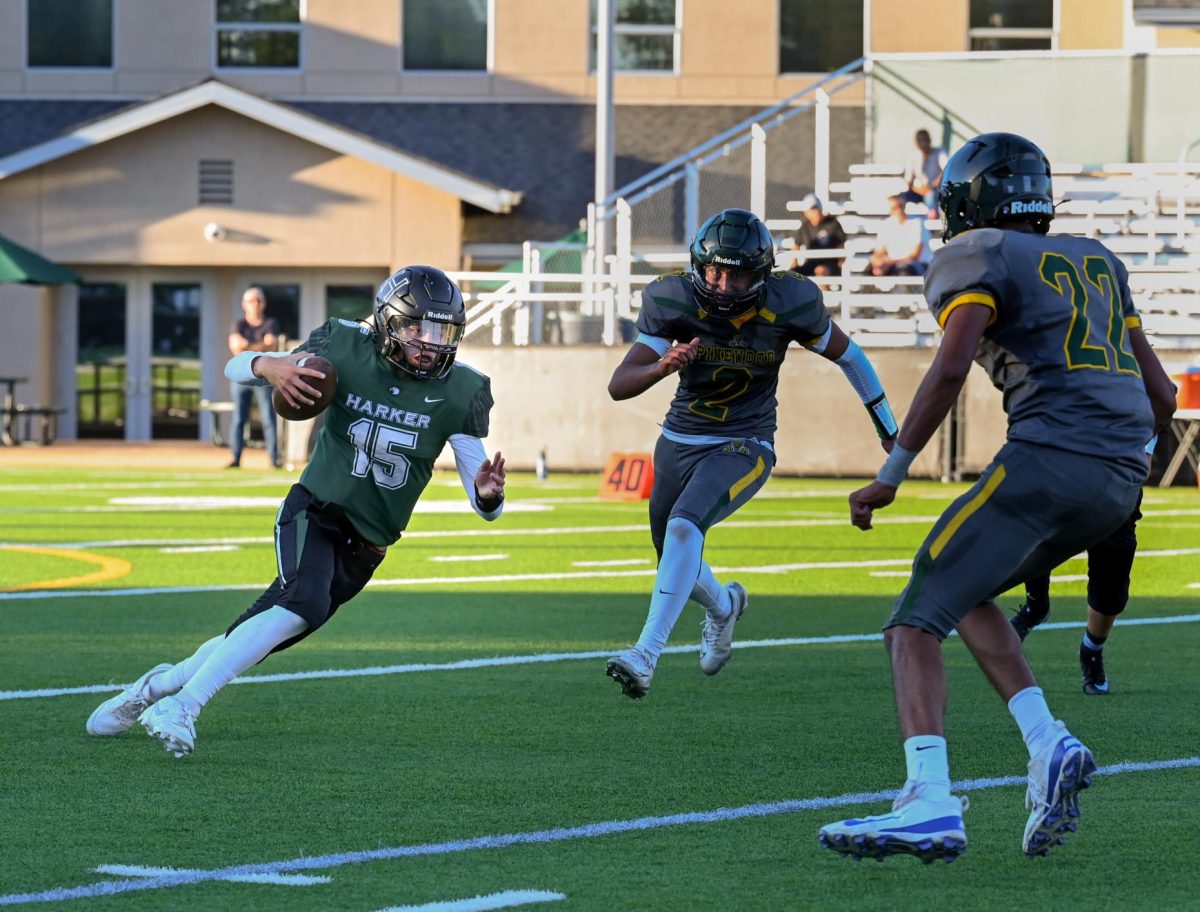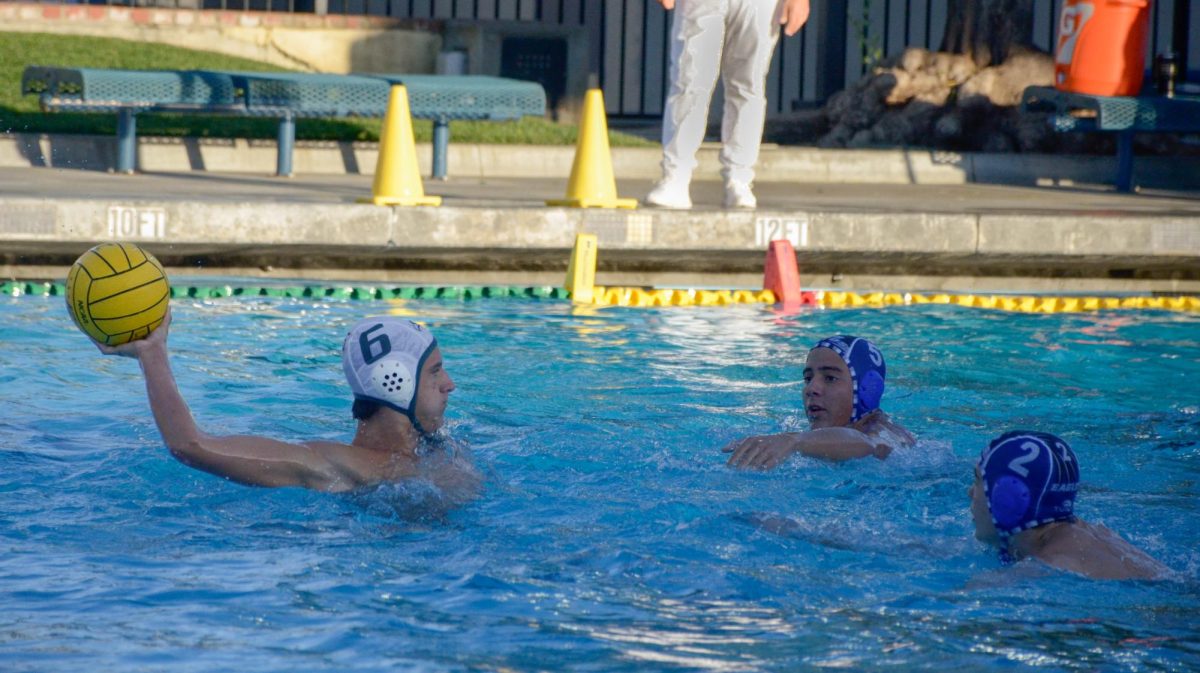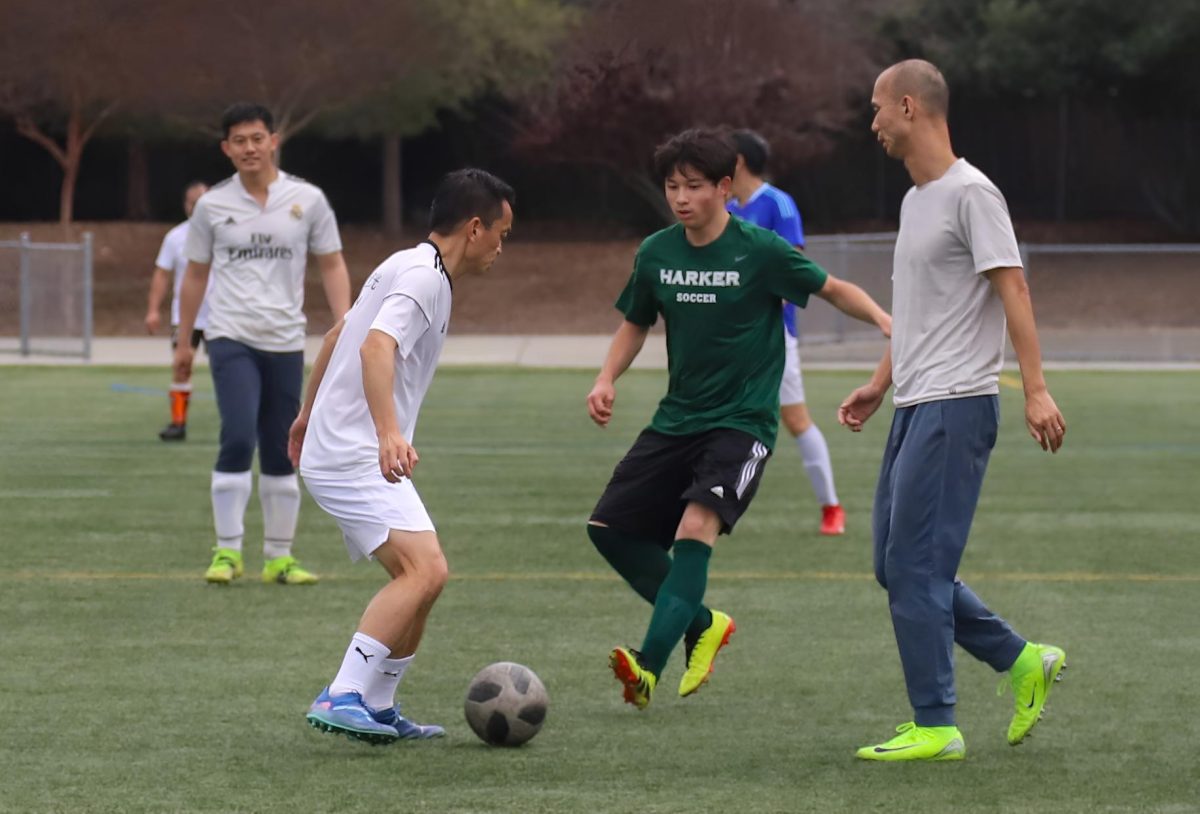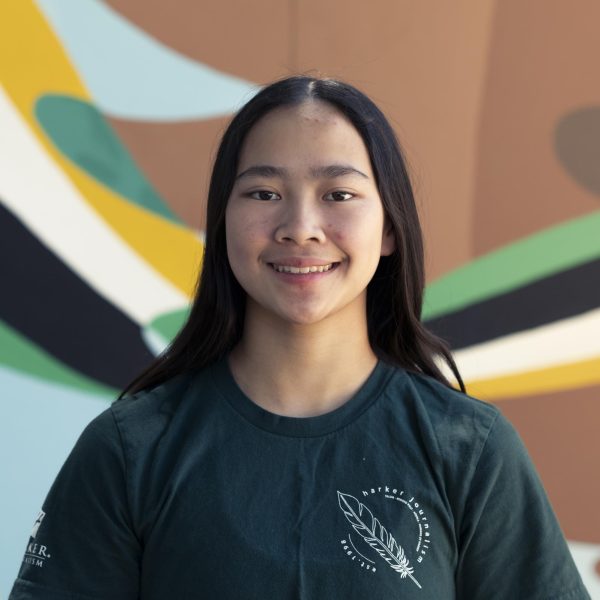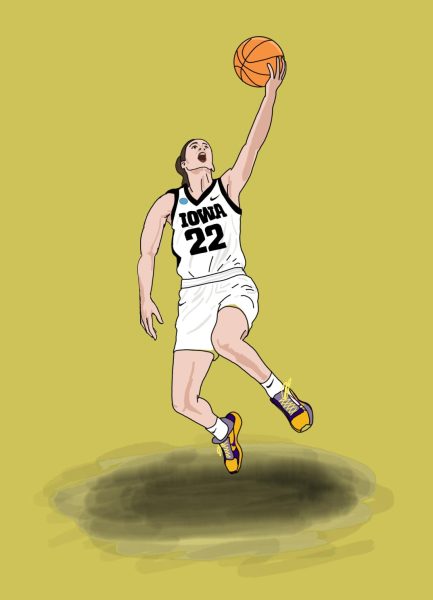
Caitlin Clark lines up to shoot two technical free throws for No. 6 ranked Iowa against No. 2 Ohio State. Stepping into the key, she takes two dribbles and scores the first, with the crowd roaring in the stands. Clark takes a deep breath, preparing herself before launching the second basket. It soars through the air, its path arching gracefully before it falls into the net with a resounding swish. More than three million viewers across the country watch as point guard Caitlin Clark surpasses Pete Maravich’s 54-year-old record of the most points scored in Division I NCAA basketball.
Closing her college basketball career with a total of 3,951 points, Clark’s talent has not only propelled her to the number one draft pick in the WNBA but has also promoted interest in women’s college basketball. Her long range shooting abilities and historic records have attracted unparalleled crowds, setting the stage for an optimistic future for women’s sports.
Varsity girls basketball player Finley Ho (9) noticed the recent shift in attitudes towards women’s basketball over social media, where the league has gained more coverage and respect.
“I used to see that whenever there’d be any video about the WNBA or women’s basketball, it would always be something bringing them down, like saying bad stuff,” Finley said. “But now, there’s a bunch of comments saying how Caitlin Clark is really good.”
This year, women’s college basketball has had its best regular season in history, with viewership on ESPN platforms averaging 476,000 spectators per game, largely due to the intensity and emotion that Clark brings to her game. This figure has increased by more than 60%, averaging higher than its men’s counterpart.
Clark’s magnetic performances have prompted improved television coverage of women’s basketball, with platforms airing games during optimal time slots on mainstream networks. Peaking at 24 million viewers, the women’s Division 1 NCAA basketball final of the South Carolina’s Gamecocks versus University of Iowa’s Hawkeyes made history as the first women’s final to draw a larger audience than the men’s, which garnered 14.82 million.
Biology teacher and former collegiate basketball player Matthew Harley noted how the rise of star players in women’s basketball like Caitlin Clark and Paige Buecker sparked his interest in the women’s game.
“I haven’t followed women’s basketball until these last couple of years,” Harley said. “Last year, the final four was amazing — watching Caitlin Clark go and break the record. The really amazing skill that she has, not just as a shooter, but seeing the whole team playing really well together, the pace they do the passing. The execution and their skill level is fantastic.”
The heightened appeal Clark has brought to the women’s game has prompted more visibility for the sport. Clark’s WNBA team, the Indiana Fever, had 22 scheduled televised appearances last year, but this season, the WNBA plans to broadcast 36 out of 40 regular season games. Both the Washington Mystics and Las Vegas Aces plan to move to a larger arena to match up against the Fever in the face of unprecedented demand for tickets.
Varsity girls basketball player Isha Kotalwar (12) began following Clark’s rise to fame a few years ago, when she first became aware of the star’s talent. Isha plans on attending Indiana Fever games in the future, which she never would have considered before Clark’s popularity.
“Now that there’s more viewers, [they] place more importance on women’s sports, which will inspire more girls to play sports,” Isha said. “Since they have more [attention], they’re going to get more resources because of the disparity between the men’s and women’s locker rooms last year.”
As Clark steers attention to women’s basketball, scrutiny has arisen over the women’s and men’s pay gap. In April of this year, Clark signed her first contract for just $338,000 over the course of four years, while her counterpart in the NBA, Victor Wembanyama, clinched a deal for $55 million.
Significant inequalities still perpetuate throughout women’s sports, as women’s sports teams continue to be overlooked in favor of male sports, whether it is inferior tip-off times or second-tier facilities. Nevertheless, Caitlin Clark has set the women’s game on a path towards greater respect and popularity with her high-scoring plays and unwavering energy.
Varsity girls basketball co-captain Emily Mitnick (11) acknowledged similar trends with Harker sports, where boys’ games tend to garner more attention and fans. She praised Clark’s ability to drive up viewership for women’s basketball and hoped to see the same trends at Harker and among other high schools.
“You see those videos on Instagram and TikTok of the little girls wearing the number 22 jersey,” Emily said. “Before, there’s always people wearing the number 30 jersey for Curry. She’s made such an impact on young girls and shows them that hard work and dedication can really lead you anywhere.”


















![“[Building nerf blasters] became this outlet of creativity for me that hasn't been matched by anything else. The process [of] making a build complete to your desire is such a painstakingly difficult process, but I've had to learn from [the skills needed from] soldering to proper painting. There's so many different options for everything, if you think about it, it exists. The best part is [that] if it doesn't exist, you can build it yourself," Ishaan Parate said.](https://harkeraquila.com/wp-content/uploads/2022/08/DSC_8149-900x604.jpg)




![“When I came into high school, I was ready to be a follower. But DECA was a game changer for me. It helped me overcome my fear of public speaking, and it's played such a major role in who I've become today. To be able to successfully lead a chapter of 150 students, an officer team and be one of the upperclassmen I once really admired is something I'm [really] proud of,” Anvitha Tummala ('21) said.](https://harkeraquila.com/wp-content/uploads/2021/07/Screen-Shot-2021-07-25-at-9.50.05-AM-900x594.png)







![“I think getting up in the morning and having a sense of purpose [is exciting]. I think without a certain amount of drive, life is kind of obsolete and mundane, and I think having that every single day is what makes each day unique and kind of makes life exciting,” Neymika Jain (12) said.](https://harkeraquila.com/wp-content/uploads/2017/06/Screen-Shot-2017-06-03-at-4.54.16-PM.png)








![“My slogan is ‘slow feet, don’t eat, and I’m hungry.’ You need to run fast to get where you are–you aren't going to get those championships if you aren't fast,” Angel Cervantes (12) said. “I want to do well in school on my tests and in track and win championships for my team. I live by that, [and] I can do that anywhere: in the classroom or on the field.”](https://harkeraquila.com/wp-content/uploads/2018/06/DSC5146-900x601.jpg)
![“[Volleyball has] taught me how to fall correctly, and another thing it taught is that you don’t have to be the best at something to be good at it. If you just hit the ball in a smart way, then it still scores points and you’re good at it. You could be a background player and still make a much bigger impact on the team than you would think,” Anya Gert (’20) said.](https://harkeraquila.com/wp-content/uploads/2020/06/AnnaGert_JinTuan_HoHPhotoEdited-600x900.jpeg)

![“I'm not nearly there yet, but [my confidence has] definitely been getting better since I was pretty shy and timid coming into Harker my freshman year. I know that there's a lot of people that are really confident in what they do, and I really admire them. Everyone's so driven and that has really pushed me to kind of try to find my own place in high school and be more confident,” Alyssa Huang (’20) said.](https://harkeraquila.com/wp-content/uploads/2020/06/AlyssaHuang_EmilyChen_HoHPhoto-900x749.jpeg)






